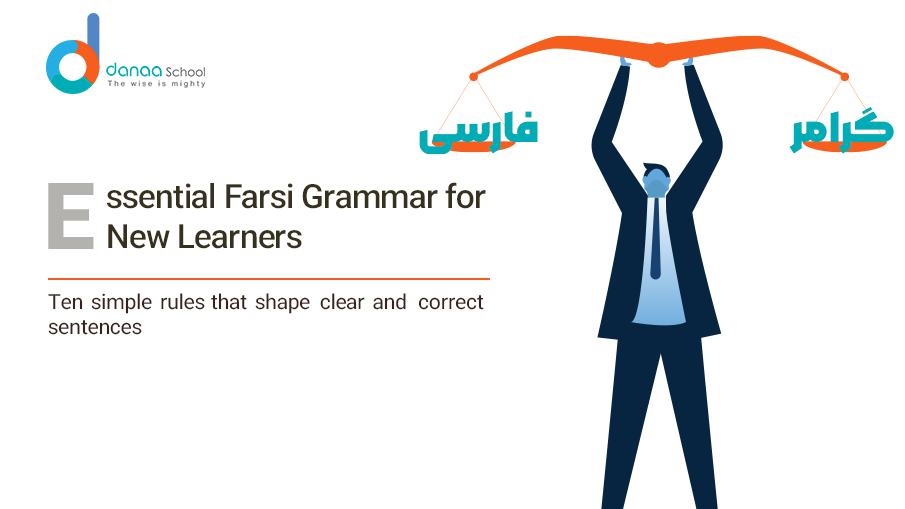Persian handwriting is a beautiful blend of art and expression, reflecting tradition and personal style. Whether you are a native Persian speaker or learning Farsi as a second language, improving your handwriting can enhance your connection to the language and make writing a more enjoyable experience. This guide will provide practical tips and techniques to refine your Persian handwriting.
Why Is Persian Handwriting Important?
Persian script, derived from Arabic, has a unique flow that requires practice to master. Improving your handwriting helps:
- Enhance readability – Good handwriting ensures clarity and prevents misinterpretation.
- Improve writing speed – A structured and fluid style allows for faster note-taking.
- Develop a deeper connection with the language – Writing by hand strengthens memory retention and language skills.
If you struggle with legibility, spacing, or letter connections, don’t worry! With practice and the proper techniques, anyone can improve their Persian handwriting.
1. Understand the Structure of Persian Letters
Learn the Basics of Persian Script
Persian script is written from right to left; letters take different forms depending on their position in a word (beginning, middle, end, or isolated). Unlike Latin scripts, Persian letters often connect fluidly, requiring smooth character transitions.
To improve, familiarize yourself with:
- The four shapes of each letter.
- Common letter pairs and connections that frequently appear in Persian words.
- The natural slant and flow of Persian writing.
Practice Letter Strokes
Each Persian letter has a specific stroke order. Start by tracing the letters and gradually practice writing them freehand. This helps develop muscle memory, making handwriting smoother and more natural.
2. Use the Right Writing Tools
Choosing the Right Pen
A comfortable pen can significantly impact handwriting quality. Consider using:
- A smooth gel pen – Ideal for fluid writing and connecting letters seamlessly.
- A fine-tip pen – Helps with precise strokes and clarity.
- A calligraphy pen – If you want to add an artistic touch to your Persian writing.
Use Lined or Grid Paper
Beginners often struggle with alignment. Using lined notebooks or grid paper helps maintain consistent size, spacing, and letter proportions.
3. Improve Your Hand Position and Posture
Proper Hand Placement
Holding your pen correctly ensures control and smooth movement. Follow these steps:
- Keep a relaxed grip to avoid hand strain.
- Position your fingers so that the pen flows effortlessly across the page.
- Angle the paper slightly to the left for better movement when writing from right to left.
Maintain Good Posture
Sitting with the correct posture prevents fatigue and improves writing efficiency. Keep your:
- Back straight but relaxed.
- Shoulders level to avoid uneven strokes.
- Wrist flexible to allow for smooth hand movement.
4. Practice Writing Common Persian Words and Phrases
Start with Simple Words
Instead of practicing isolated letters, write common Persian words to develop fluency. Examples include:
- سلام (Salam) – Hello
- کتاب (Ketab) – Book
- دوست (Doost) – Friend
Write Sentences and Short Paragraphs
Once comfortable with words, practice writing complete sentences. Focus on:
- Consistent spacing between words.
- Balanced letter connections for a natural flow.
- Steady handwriting speed without rushing.
5. Focus on Spacing and Alignment
Maintain Even Spacing
Persian script relies on proper spacing to distinguish words. Some letters (e.g., “ب” and “پ”) require more space than others. Practice by:
- Writing words evenly spaced on lined paper.
- Checking if words are too close or too far apart in your writing.
Align Your Writing
Persian letters should rest on an invisible baseline. Some letters (e.g., “ک” and “ی”) extend below this line. Using ruled paper helps maintain proper alignment.
6. Try Calligraphy for Artistic Persian Writing
Introduction to Persian Calligraphy
Persian calligraphy is an art form that enhances writing aesthetics. Even if you are not aiming to become a calligrapher, practicing with calligraphy techniques can:
- Improve control over strokes.
- Help develop consistent letter proportions.
- Make your handwriting more visually appealing.
Use a Calligraphy Workbook
If you want to refine your skills further, consider calligraphy workbooks designed for Persian script. These resources guide you through structured exercises to enhance writing precision.
7. Set a Daily Practice Routine
Short but Consistent Practice Sessions
Instead of long, exhausting sessions, practice 10-15 minutes daily. This keeps progress steady without causing hand fatigue.
Track Your Progress
Keep a handwriting journal to:
- Compare your old and new writing samples.
- Identify areas for improvement.
- Stay motivated by seeing progress over time.
FAQs
1. How long does it take to improve Persian handwriting?
With daily practice, noticeable improvements can be seen within a few weeks to a couple of months.
2. What is the best pen for Persian handwriting?
A smooth gel pen or fine-tip pen is best for clear and fluid Persian handwriting.
3. Can left-handed people write Persian neatly?
Yes! Left-handed writers can angle the paper slightly and use a non-smudging pen for better results.
4. What are common Persian handwriting mistakes?
Common mistakes include inconsistent spacing, improper letter connections, and incorrect slanting of words.
5. Is Persian calligraphy necessary to improve handwriting?
No, but calligraphy techniques can help refine letter shapes and improve overall writing aesthetics.
6. Where can I find Persian handwriting practice sheets?
You can find free Persian handwriting worksheets online or purchase Persian calligraphy books for guided practice.
7. Can I learn Persian handwriting without knowing the language?
But learning Farsi alongside handwriting practice makes the process more meaningful and effective.
Ready to Improve Your Persian Handwriting? Learn Farsi with Danaa School!
If you want to take your Persian skills to the next level, consider learning Farsi with Danaa School. Our expert instructors provide structured lessons that help students confidently read, write, and speak Persian.✨ Start your journey today! Visit Danaa School and sign up for our Persian courses!









